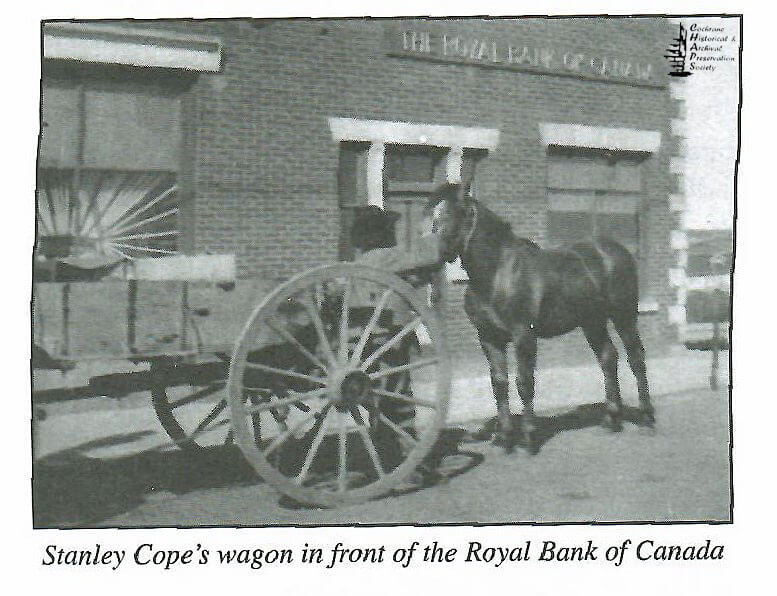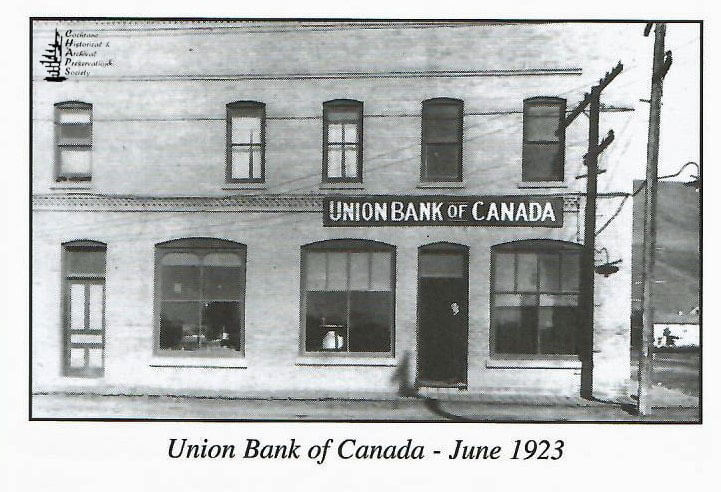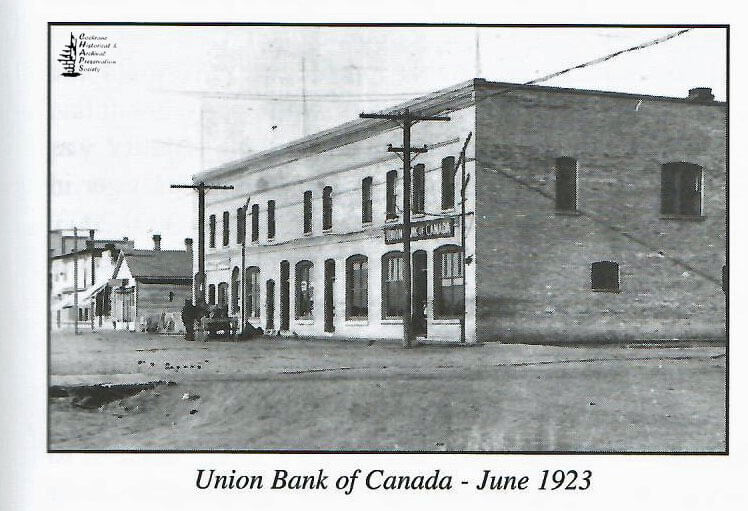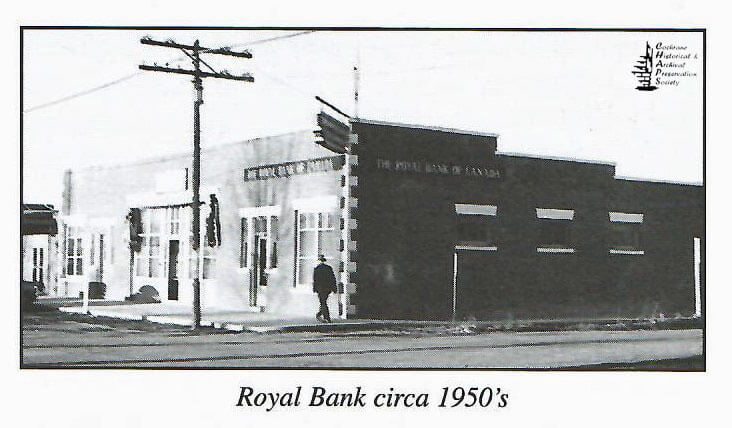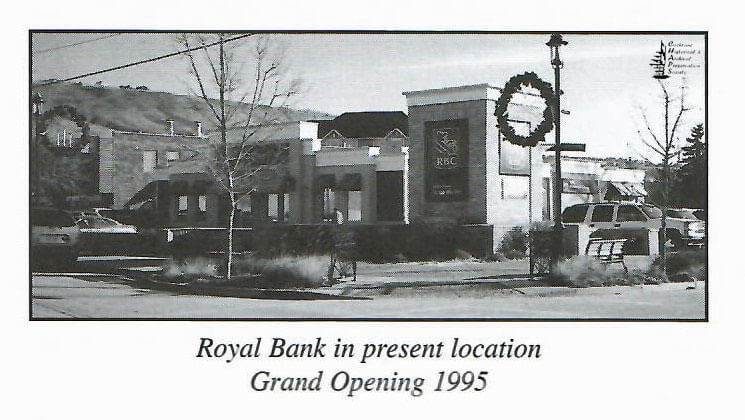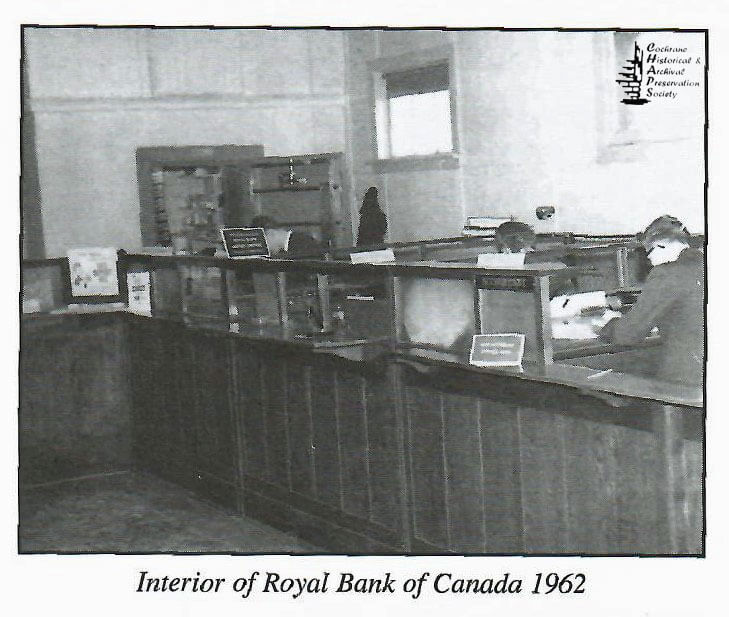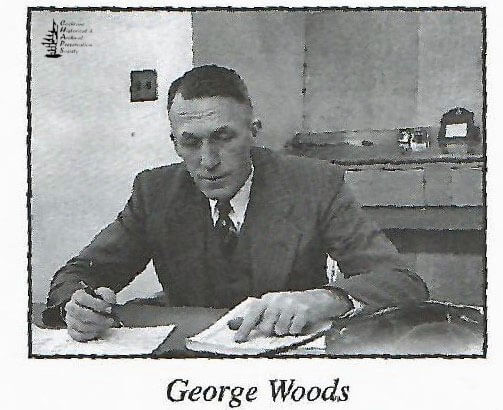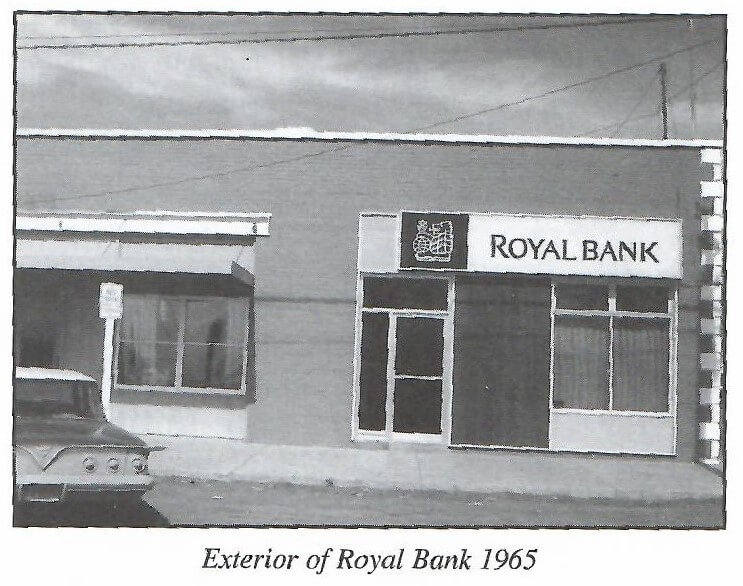from More Big Hill Country 1945-1980
The Village of Cochrane had only been in existence for four years when the Union Bank of Canada arrived in 1907 to set up a branch. Frequently referred to as the pioneer bank of Western Canada, the Union Bank followed Canada’s railway across the Prairies and had the distinction of being the first bank to provide an extensive branch system throughout the Prairie Provinces. After Cochrane gained village status in 1903, its growth took off making it only a matter of time before banking services came to the area; and the Union Bank was the first bank on the scene.
The arrival of the Union Bank would signal the start of a new era for Cochrane. For a time, the branch not only served the residents of Cochrane; the Bank Staff also travelled via horseback to provide on-site banking services to a coal mine located three miles from the branch.
In the early 1900s, banking was considered a highly respectable and dignified profession for a gentleman to set his sights on. Young men, starting at the ages of 16 or 17, were eager to acquire junior positions with a banking establishment as a means to moving into the professional ranks and increasing one’s social standing.
Their roots were rural or small-town and they were very often the second or third sons of farmers, who
foresaw little chance of inheriting the family home stead and were eager to find respectability. Starting off as junior with a salary of $150 -$250 per year was a far cry above the wages to be had from labour intensive positions. Through meticulous work, a junior at the bank could work his way up the ladder, eventually obtaining the position of Branch Manager. This was considered quite an achievement in one’s banking career, as the Manager was the public face of the Bank in the town. Plus the increase in salary was agreeable; a rural Bank Manager’s salary could range from around $100 to $1,400 per annum in the early 1900’s.
On September 1, 1925, the Union Bank of Canada merged with Royal Bank and the latter bank continued to operate out of the same building. Three years later, the Branch was destroyed by fire. A new building was erected on the same site shortly thereafter, and Bank business was conducted from these new premises for the next forty-nine years. During that time, the Branch was renovated in 1964 and expanded in 1969.
In the mid-1970s, the Branch’s quarters had become cramped and there was no room for further expansion. In 1976, the bank leased space in a mall complex that was being built. On March 7, 1977, RBC celebrated the grand opening of its new premises in the Cochrane Valley Shopping Center. The Branch continued to grow and on November 30, 1995, it moved to its current location at 130 1st Avenue West.
Royal Bank Managers
R.W. Widdoes 1907-1909
T.C. Patterson 1909-1926
- R.C. Jamieson 1926-1928
- C.G.M. McBey 1928-1934
- J.K Atkinson 1934-1938
- A.H. O‘Keefe 1938-1946
- A.J. Allen 1946-1952
- J.W. Clark 1952-1955
- G.W. Woods 1955-1966
- C.M. Moe 1969-1972
- E.L, Archer 1972-1976
- M.E. Robertson 1976-1984
- L.R. Harding 1984-1989
- W.R. Lyse 1989-1997
- K.M. Zimmel 1997-1998
- R.G. Parker 1998-2000
- M.J. Semple 2000-2003
J.D. Walton 2003 –
Royal Bank by Gayle Want
The bank had outgrown the mall location. Although there were already bank machines in the foyer, it needed a building that would accommodate a drive-through machine as well. The corner at 130 – 1st Avenue West was perfect.
It’s on the same street, only 100 yards from the corner the bank started on 100 years ago. That location has always been a hub of activity.
In 1898, the Murphy Brothers built the Murphy House which was later called the Alberta Hotel there. It was a large three-story hotel that hosted many functions. On December 12, 1927, it burned to the ground. Only 10 months later on October 1, 1928, the Fisher Block that housed the Royal Bank was destroyed by fire.
There were two old buildings on the lot in 1994 that had to be demolished to build the new bank. One was the old Webb and Milligan ESSO garage building and gas pumps, as well as the old brick Alberta Government Telephone building. The bricks from the Telephone building were made here in Cochrane by the Collin’s Brickyards. They were salvaged during demolition and were used to build the corner signage and benches. There is a historical plaque with a picture of the brickyards and Mr. Collin’s on it.
It’s still a very busy corner and you often see folks visiting or resting on those benches on warm sunny days.
Tidbits gathered from bank employees Joanne Fenton, Vicki Deeton, Gloria Johnson, Cheri Lyse as told to Gayle Want.
It was considered quite a privilege to work for the bank in a small town for men or women.
The first woman to work in the banking industry was Jennie Moore in 1904. The first female bank manager in Cochrane bank was MJ. (Maggie) Semple from 2000-2003.
At one time the bank staff had to get bank permission to get married.
At one time the bank staff were not allowed to socialize or drink in the local taverns or beer parlours
Dress codes for women were relaxed some in the 1970s when they could wear dress pants.
They had to have a top or jacket that would be long enough to cover their buttocks.
Cochrane’s first automatic banking machine in the 1980s was serviced by two staff members who would be on-call evenings and weekends. Pagers were carried for contacting staff. The contents of the machines were verified each morning by bank staff.
The bank always encouraged staff to take courses and upgrade their skills.
Notes found in George Wood's Momentos
Compiled by Marilyn Woods Whittle
The objective of all dedicated employees should be to thoroughly analyze all situations, anticipate all problems prior to their occurrence, have answers for these problems and move swiftly to solve them if called upon.
However…
When you are up to your ass in alligators it is difficult to remind yourself that your initial objective was to drain the swamp
– Started career in Pierson, Manitoba May 15, 1922.
– Arrived in Cochrane on February 28, 1955.
– Retired from Cochrane March 31, 1966.
– Relieved in 68 branches and retired again on February 23, 1976.
– The Bank was used on Saturday mornings as a place for bake sales. Church ladies group took turns and the baked items were sold quickly.
– Two bachelor brothers had their first phone installed. The one brother was angry that his brother had made many phone calls so he arrived at the bank to pay his bills and he said to George, I just told him (my brother) “What’s the point of having a telephone if you ain’t gonna use it”.
– Another client with very limited eyesight arrived at the bank and always got George to write out the cheques for his bills. He would then remove his thick glasses, put his nose right on the desk and sign the cheques.
– The McGonigles – Rose came to the bank with her family allowance cheque and deposited the money into each child’s account. The picture shows 9 children. The last children were twins, a boy and a girl.
– The Bank offered a course from Queens University – “Queens University in accordance with the authority given by the Canadian Bankers Association does hereby certify that has duly passed with Honours the examinations for the Certificate of the Association, has thereby become an Associate of the
Canadian Bankers Association”.
– George also took many legal courses via correspondence from Queens. He helped probate the will of many locals.
– The RCMP received information that the bank in Cochrane was to be robbed. George Woods was the bank manager. In consultation with the RCMP, they decided that George should arrive as usual. The RCMP would hide in the ditch across the street from the bank. Two men in trench coats approached the bank, peered in the window and banged on the door. George came to the door, opened it, the RCMP (a two-man detachment at the time) sprang from the ditch with their guns drawn. The two men were bank inspectors. They were very impressed with the security in Cochrane. The “robbers” never arrived.
In 1959 the bank decided that it had to replace the safe door. A contractor was hired. Yvon de Carle was an employee and George Woods was the bank manager. Yvon slept at the bank to protect the contents for the duration of the renovation.
